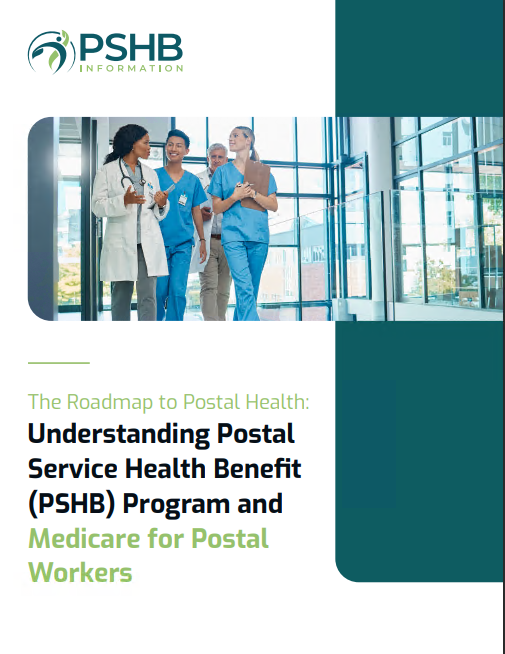Key Takeaways
- The Postal Service Reform Act of 2022 introduced the Postal Service Health Benefits (PSHB) program, which will replace the Federal Employees Health Benefits (FEHB) for postal workers starting in 2025.
- The transition to PSHB will have significant implications for postal workers, particularly those approaching retirement, due to new Medicare enrollment requirements.
The Law That Paved the Way for PSHB and What It Means for Postal Workers
The Postal Service Reform Act (PSRA) of 2022 represents a significant legislative effort to modernize and stabilize the United States Postal Service (USPS). Among its various provisions, one of the most impactful is the establishment of the Postal Service Health Benefits (PSHB) program, which will come into effect in January 2025. This new program will replace the Federal Employees Health Benefits (FEHB) program for USPS employees, retirees, and their eligible family members. The shift is expected to have far-reaching consequences for the nearly half-million postal workers and retirees it covers.
A New Health Benefits Landscape
The PSHB program was designed to address the unique challenges faced by the USPS, which has struggled financially in recent years. One of the primary goals of the PSRA was to reduce the burden of pre-funding retiree health benefits, a requirement that had been a significant financial strain on the USPS under the Postal Accountability and Enhancement Act of 2006.
Under the PSHB, postal workers will see a similar structure to the FEHB, but with a few critical differences. For example, while the program will initially mirror the coverage and cost-sharing provisions of the FEHB, it will operate separately. This separation allows the USPS to negotiate and administer the plans independently, potentially leading to cost savings and more tailored benefits in the long term.
Key Changes and Their Implications
Medicare Enrollment Requirement
One of the most significant changes brought about by the PSRA is the mandatory enrollment in Medicare Part B for USPS retirees and their eligible family members who turn 65 on or after January 1, 2025. This requirement is aimed at reducing the USPS’s health care costs by shifting some of the burden to Medicare. However, it also means that postal retirees will need to pay Medicare Part B premiums in addition to their PSHB premiums.
This change has raised concerns among those who are close to retirement, as it may increase out-of-pocket costs for some. Retirees who are already enrolled in Medicare Part B will continue with their existing coverage, but those who chose not to enroll in the past will now be required to do so to maintain their postal health benefits.
Impact on Current FEHB Participants
For current USPS employees and retirees enrolled in the FEHB, the transition to the PSHB will occur during the open enrollment period in November and December of 2024. Those who do not actively choose a PSHB plan during this period will be automatically enrolled in a plan similar to their current FEHB coverage. This automatic enrollment aims to ensure that no one is left without coverage during the transition.
While the PSHB will initially offer plans similar to those in the FEHB, there is some uncertainty about how the offerings might diverge in the future. The Office of Personnel Management (OPM), which will administer the PSHB, has indicated that while the benefits will remain comparable in the short term, different cost structures and plan designs may emerge as the program evolves.
Preparing for the Transition
As USPS employees and retirees prepare for this significant change, it is crucial to stay informed about the options available under the PSHB. The USPS and OPM have committed to providing detailed information in the coming months to help individuals understand their choices and the potential impact on their finances and health coverage.
Financial Implications
The financial implications of the switch to PSHB are still being fully understood. While the USPS expects the new program to help reduce its overall healthcare costs, individual impacts may vary. Some postal workers and retirees may find that their costs increase due to the new Medicare Part B requirements, while others may benefit from the potentially lower premiums negotiated under the new program.
What Postal Workers Should Do
For current USPS employees, particularly those nearing retirement, understanding the implications of the PSRA and the upcoming transition to PSHB is essential. It’s advisable to:
-
Review Medicare Enrollment: If you are nearing age 65, consider how the mandatory Medicare Part B enrollment will affect your healthcare costs. Evaluate whether enrolling in Medicare Part B earlier could be beneficial.
-
Stay Informed: Keep an eye on communications from the USPS and OPM about the upcoming open enrollment period. This is your opportunity to review the new PSHB plans and select the one that best meets your needs.
-
Seek Financial Advice: The changes may have significant financial implications, especially concerning Medicare premiums and out-of-pocket healthcare costs. Consulting with a financial advisor who understands federal employee benefits can provide valuable guidance.
What Lies Ahead
As the January 2025 implementation date for the PSHB program approaches, USPS employees and retirees will need to navigate a new landscape of health benefits. While the PSRA aims to stabilize the USPS’s finances, it also introduces new complexities for those it covers. The upcoming transition period will be a critical time for postal workers to make informed decisions about their health coverage and financial future.
Uncertainties and Potential Challenges
Despite the detailed planning that has gone into the PSHB program, there remain uncertainties, particularly regarding how the separation from the FEHB will impact plan choices and costs in the long term. The OPM has acknowledged that the transition could lead to changes in how insurance carriers approach both PSHB and FEHB plans, with some carriers potentially opting out of one program in favor of the other.
Another area of uncertainty is the long-term sustainability of the PSHB program. While it is expected to provide immediate financial relief to the USPS, much will depend on how well the program can manage costs and maintain a balance between affordability and comprehensive coverage.
The Role of Employee Advocacy
Employee unions and advocacy groups will play a crucial role in the transition to the PSHB program. These organizations will be instrumental in ensuring that postal workers and retirees receive fair and transparent information about their options and that any issues that arise during the transition are addressed promptly.
The advocacy efforts may also extend to future negotiations over the terms of the PSHB plans, particularly as the program evolves and potentially diverges further from the FEHB. Ensuring that postal workers continue to have access to quality health care at an affordable cost will be a key focus of these groups.
Navigating the Future
As postal workers and retirees prepare for the PSHB program’s launch, the key to navigating this change successfully lies in staying informed, being proactive, and seeking out resources that can help in making the best possible decisions for your health and financial well-being. The PSRA has set the stage for a new era in USPS employee benefits, and understanding its implications is crucial for all those affected.
Contact Information:
Email: [email protected]
Phone: 4075554567






